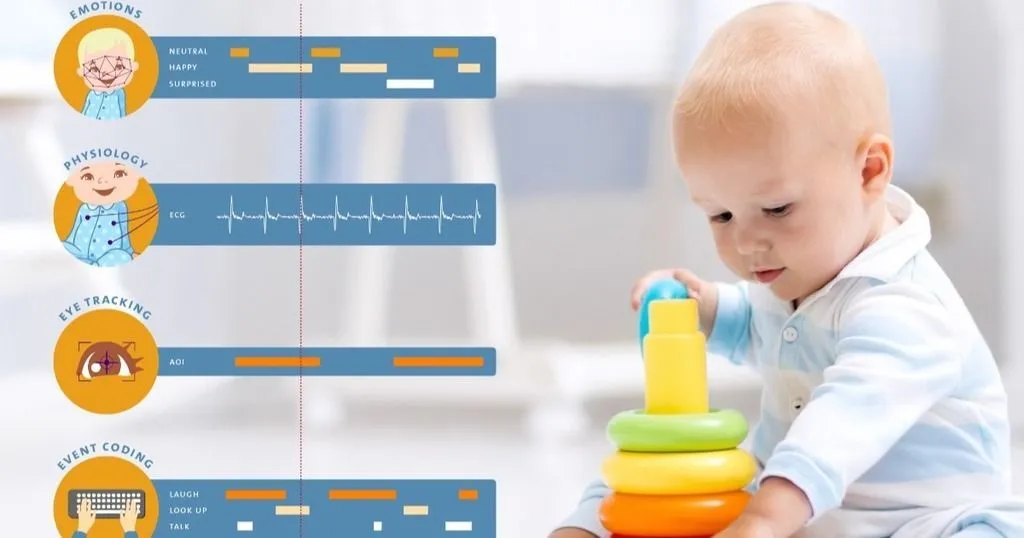Let's work together: mother-adolescent interactions in fragile X syndrome

All parents want their children to comply with their requests - for at least some of the time! What's the best way to request something when you have an adolescent boy with fragile X syndrome?
Posted by
Published on
Tue 19 Sep. 2023
All parents want their children to comply with their requests - for at least some of the time! What's the best way to request something when you have an adolescent boy with fragile X syndrome? Fragile X syndrome is a genetic condition that causes a range of developmental problems, including learning disabilities and cognitive impairment.
Researcher Fielding-Gebhardt and her colleagues studied interactions between mothers and their sons with fragile X syndrome.1 Specifically, they wanted to know how mothers' requests and responsivity interacted with adolescent compliance while performing different tasks together.
Understanding fragile X syndrome
Fragile X syndrome (FXS) is a genetic disorder that affects about one in 4,000 men and one in 6,000 women. People with FXS often experience difficulties with language, social communication, cognition, and daily living skills. Typically, boys have more severe deficits and behavioral problems. Also, about 50-75 percent of boys with fragile X syndrome meet criteria for autism spectrum disorder (ASD).2
Studying the best way to interact with children who have fragile X syndrome helps parents and other caregivers provide the best guidance for their further development. This includes teaching children to comply with their parents' requests.
How children learn about the world
Learning to comply with parental requests is an important aspect of developmental psychology. After all, by following their parents' directions and requests, children learn about how the world works and what part they play in it. Compliance is a stepping stone in learning new skills, helps foster a positive family environment, and is needed to succeed well in school.
Within FXS research on this topic, studies have mostly focused on interactions between compliance and mothers' responsivity. Researchers found that children with fragile X syndrome whose mothers are more responsive - showing more attention and warmth - generally show less behavioral problems and better language skills.3
Parental requests and compliance
What else plays a role in compliance? There are different ways to request something, and it also matters how often you ask for something. For example, a request may be direct ("Pass me the butter") or more indirect and ambiguous ("My roll needs butter" + reach gesture). These indirect requests may be more difficult to understand and to comply with, although research in this area shows mixed results.
In the current study, researcher Fielding-Gebhardt and her team studied the effects of directness and frequency of mothers' requests on their adolescent sons' compliance. Moreover, they examined whether adolescent compliance and mothers' behaviors are the same over different types of tasks. Finally, they examined differences in dyads of adolescents with or without ASD.
Read more about parent-child interactions, developmental disorders, and other developmental psychology examples in these blog posts:
- The New Jersey Families Study: unlocking the black box
- Parenting behaviors and executive function in Down syndrome
- Improve the interaction between parent and child with autism
Compliance behavior in different settings
They included 35 mother-son dyads in their study (average ages 46 and 16 years) and asked them to perform three different tasks together. Their aim was to vary these tasks in how familiar and rewarding they would be for the adolescents. In the first task, mothers and sons completed Castle LogicTM puzzles together. For the second task, they played pre-installed two-player games on an iPad. In the third task, mothers and sons worked together to make a snack, using step-by-step instructions.
All mother-son interactions were coded using The Observer XT.
Coding behavior in mother-adolescent interactions
When observing mothers during mother-adolescent interactions, the researchers coded requests for behavioral compliance ("Give me the milk"), requests for verbal comply ("Say thank you"), recodes ("Yes, the yellow ball"), comments ("I know you like this flavor"), and praise ("Good job"). They also coded whether requests were direct or indirect. Mothers' responsivity was defined as the amount of turns they took while communicating with their sons.
For the adolescents, the coders observed whether they were compliant or noncompliant. They also noted when adolescents had no opportunity to comply, for example, when their mothers took over for them or didn't allow sufficient time to comply with their request.
Interactions between requests, task demands, and compliance
The research team's most important finding was that adolescent compliance decreased when mothers' requests were more frequent. However, it's not possible to say how this relationship works exactly. Does a higher rate of requests lead to decreased compliance, or do mothers make more requests when they have adolescent sons who are already less compliant? Or is adolescent temperament a more important factor?
The team also found that mothers' responsivity was highest during the puzzle task, while request frequency was highest during the snack task. Adolescent compliance did not vary by task. Furthermore, it didn't matter whether mothers requested something directly or indirectly.
How can we understand mother-adolescent interactions in fragile X syndrome?
Researcher Fielding-Gebhardt and her colleagues suggest that mothers may have adjusted their behavior to what their sons need and how they behaved. In other words, they may be highly attuned to their child's abilities in combination with different task demands.
The researchers also note that autism symptoms may play a role in the effects they found. The relationship between adolescent compliance and request frequency was most pronounced in the group of adolescents with both FXS and ASD. Moreover, they found that both autism symptoms and receptive language skills were significantly associated with compliance.
Improving fragile X syndrome treatment
The findings from this study may not translate easily to clinical practice. As the researchers note, their sample size is small and may not reflect the entire population of children with fragile X syndrome. Also, the tasks involved may be too different from what these adolescents encounter in daily life.
However, these findings do help us better understand interactions between mothers' behaviors, task demands, and adolescent compliance in fragile X syndrome. As this field of research grows, parents and other caretakers may learn how to adapt their requesting behaviors or task demands to better fit with their child's development, increasing the chances that they will comply.
As a result, this will support children with FXS in their further development.
References
1. Fielding-Gebhardt, H.; Brady, N.; Bredin-Oja, S.; Warren, S. (2023). Transactional relationships between maternal requesting and responsivity, adolescent compliance, and task demands in fragile X syndrome. Research in Developmental Disabilities, 134, https://doi.org/10.1016/j.ridd.2022.104417.
2. Abbeduto, L.; Thurman, A.; McDuffie, A.; Klusek, J.; Feigles, R.; Brown, T.; Roberts, J. (2019). ASD comorbidity in fragile X syndrome: symptom profile and predictors of symptom severity in adolescent and young adult males. Journal of Autism and Developmental Disorders, 49(3), 960–977. https://doi.org/10.1007/ s10803-018-3796-2
3. Warren, S.; Brady, N.; Fleming, K.; Hahn, L. (2017). The longitudinal effects of parenting on adaptive behavior in children with fragile X syndrome. Journal of Autism and Developmental Disorders, 47(3), 768–784. https://doi.org/10.1007/s10803-016-2999-7
Related Posts

Behavioral coding: What and how

Anxiety and Autism



